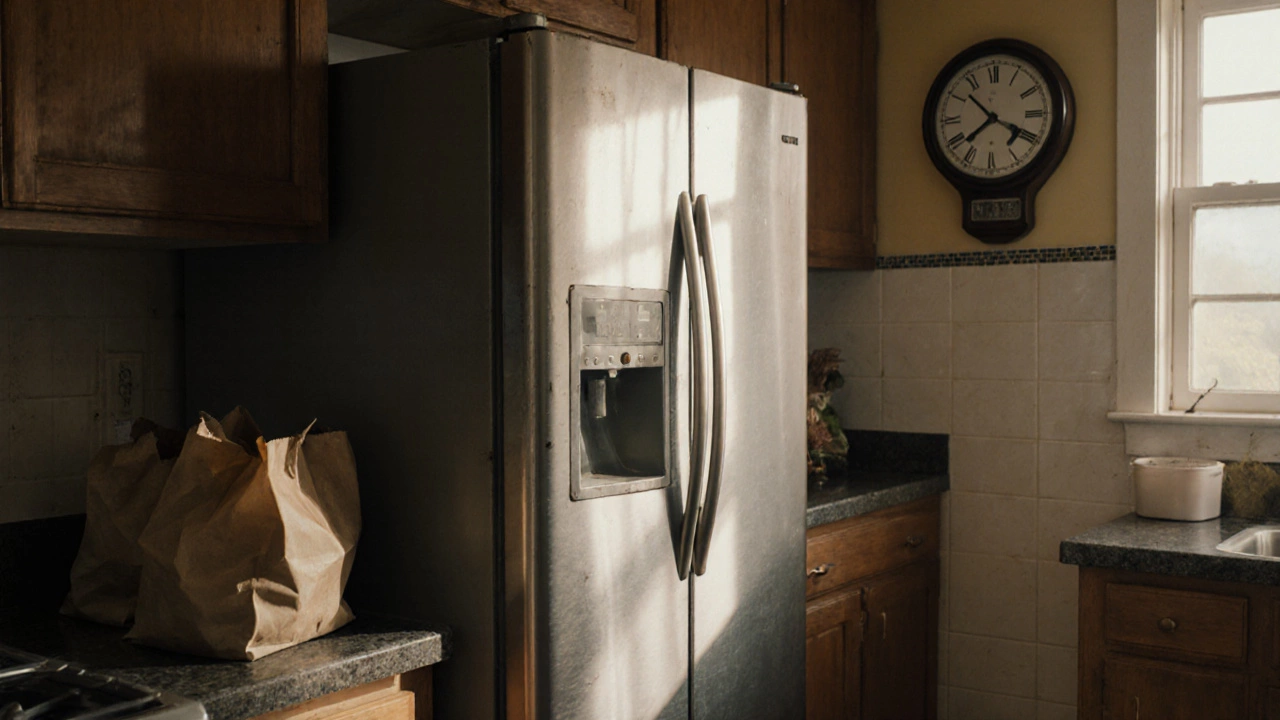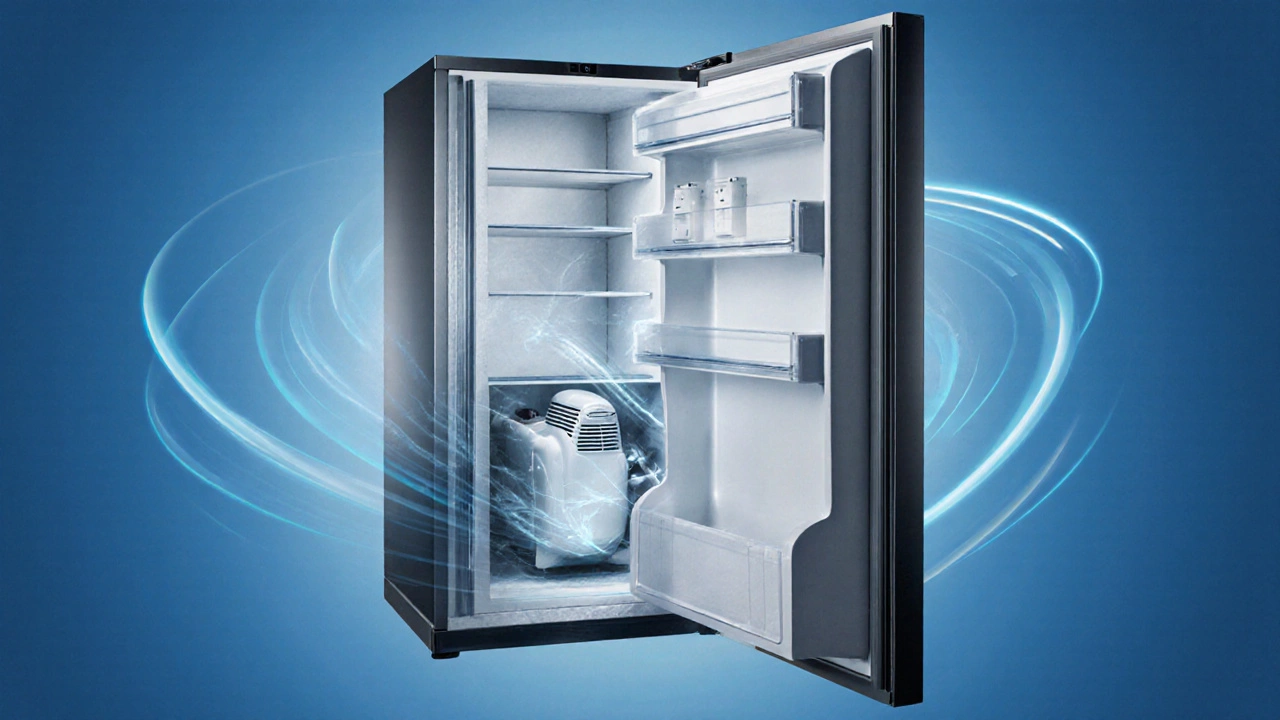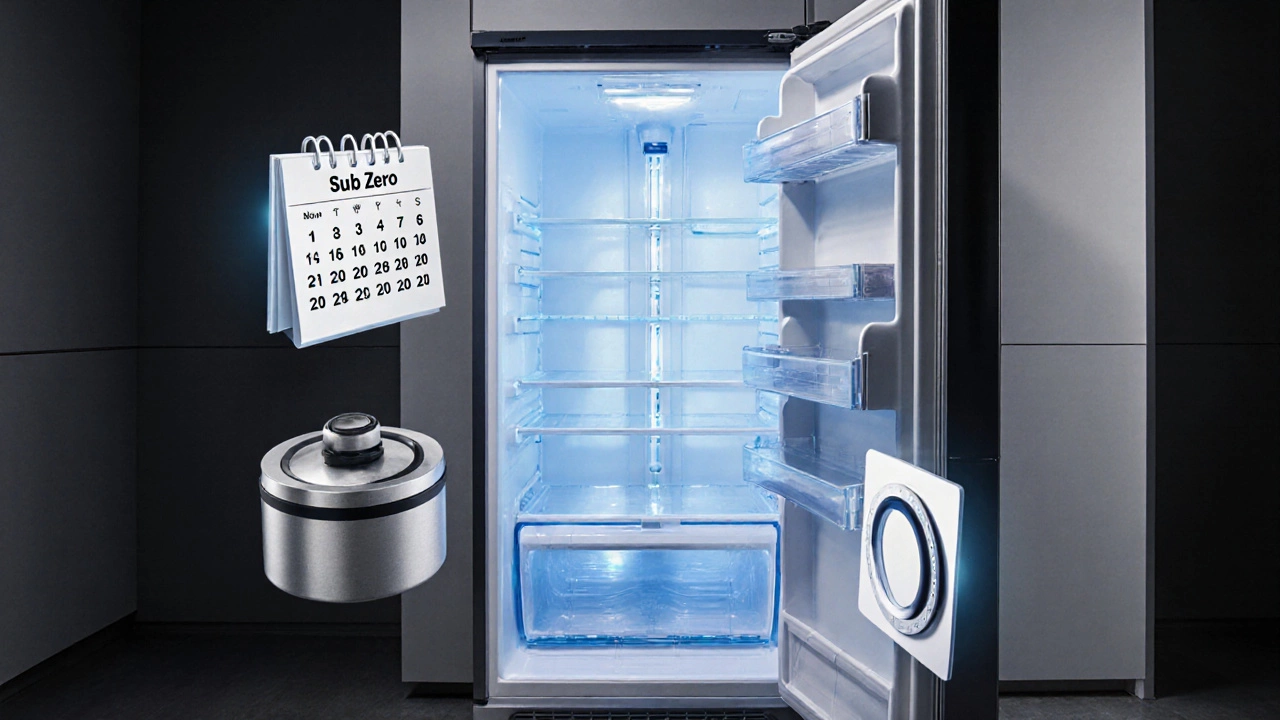
Refrigerator Reliability Calculator
Calculate Your Refrigerator Reliability
When you buy a refrigerator, you don’t want to be replacing it in three years. You want something that runs quietly, keeps food fresh, and doesn’t break down when you need it most. With so many brands claiming to be the best, how do you know which one actually delivers? The answer isn’t just about features or price-it’s about real-world reliability, energy use, and how long these machines last in actual homes.
Reliability isn’t about marketing
Brands spend millions on ads showing perfect families with gleaming fridges. But what matters is what happens after the box is opened. A 2024 study by Consumer Reports tracked over 40,000 refrigerators in use across the U.S. and Canada over five years. The data didn’t lie: some brands consistently failed more often than others. The top performers didn’t have the fanciest touchscreens or the biggest ice makers-they had simple designs, solid compressors, and fewer electronic parts that could break.
One of the biggest surprises? Samsung, often praised for innovation, ranked near the bottom for reliability. Their smart fridges with built-in cameras and Wi-Fi controls had 2.5 times more service calls than simpler models. The complex electronics, meant to make life easier, ended up being the weak point. Meanwhile, brands that stuck to basics kept running.
Top 3 most reliable refrigerator brands in 2025
Based on repair data, customer surveys, and long-term performance, these three brands stand out:
- Whirlpool-This brand has been making fridges for over 100 years. Their models use a single compressor, minimal electronics, and durable seals. In the Consumer Reports study, Whirlpool had the lowest failure rate among French door models. Many units ran for 12+ years with no major repairs. Their Energy Star ratings are consistently above average, and their insulation design cuts power use by up to 18% compared to older models.
- LG-LG’s linear compressor technology is a game-changer. Unlike traditional compressors that turn on and off, LG’s runs at variable speeds, reducing wear and noise. Their fridges use fewer moving parts, which means fewer things to break. In 2024, LG ranked #1 in energy efficiency among mid-range fridges, using an average of 420 kWh per year. Their reliability score was second only to Whirlpool, with service calls under 5% after five years.
- Sub-Zero-If you’re willing to pay more, Sub-Zero is the gold standard. Built in Wisconsin with commercial-grade components, these fridges are designed to last 20+ years. They use dual refrigeration systems (separate cooling for fridge and freezer), which prevents odor transfer and maintains perfect humidity. While they cost 2-3 times more than a standard fridge, their repair rate is under 2% after ten years. They’re also among the most energy-efficient high-end models, thanks to vacuum-sealed insulation.
What makes a fridge truly reliable?
It’s not just the brand-it’s the design. Here’s what actually matters:
- Compressor type-Linear compressors (like LG’s) last longer than traditional ones. They’re quieter and use less power.
- Number of electronic parts-The more screens, sensors, and Wi-Fi features, the more things that can fail. A fridge with a simple dial and basic controls often outlasts a smart one.
- Seals and gaskets-Rubber seals that crack or warp let cold air escape. Brands like Whirlpool use thicker, more flexible rubber that lasts longer.
- Insulation quality-Better insulation means less energy use and less strain on the compressor. Sub-Zero’s vacuum insulation is the best on the market. Whirlpool and LG use high-density foam that’s improved significantly since 2020.
- Warranty length-A 10-year parts warranty on the compressor is a strong signal. Whirlpool and LG offer this on most models. If a brand only gives 1 year, they’re not confident it’ll last.

Energy efficiency and reliability go hand in hand
A fridge that uses less electricity isn’t just better for your bill-it’s better for the machine. When a fridge works harder to stay cold (because of poor insulation or bad seals), the compressor runs longer. That means more heat, more wear, and a shorter life. The most reliable fridges in 2025 are also the most efficient.
Look for the Energy Star label, but dig deeper. The average fridge uses 450 kWh per year. The most efficient models (like LG’s LSXS26366S or Whirlpool’s WRF535SWHZ) use under 400 kWh. Sub-Zero’s 700 Series uses just 380 kWh, even though it’s nearly 30 cubic feet. That’s 15% less than the average, and it’s because of the way the insulation and compressor work together.
Don’t be fooled by “eco mode” buttons. Real efficiency comes from design, not settings. A fridge that’s built to save energy will do it without you having to change anything.
Brands to avoid for reliability
Not all popular brands are reliable. Here’s what the data shows:
- Samsung-High failure rates on smart features. Ice makers jam, touchscreens freeze, and Wi-Fi drops constantly. Repair costs often exceed half the price of a new unit.
- GE Profile-Looks sleek, but the electronics are fragile. Many units develop cooling issues after 5-6 years. Their warranty doesn’t cover control board failures, which are common.
- Haier-Cheap to buy, expensive to fix. While their entry-level models are fine for short-term use, they rarely last beyond 8 years. The compressor and evaporator fans fail more often than industry average.
These brands often win on price or looks-but if you want something that lasts, they’re not worth the risk.
What to look for when shopping
Here’s a simple checklist before you buy:
- Choose a model with a 10-year compressor warranty-this is the best indicator of confidence.
- Avoid models with a built-in water dispenser or ice maker if you don’t use them daily. These add complexity and failure points.
- Look for single compressor models unless you need dual refrigeration (like Sub-Zero).
- Check the annual energy use in kWh-aim for under 420 kWh.
- Read reviews from owners who’ve had the fridge for 3+ years. Look for comments like “still works fine” or “no repairs needed.”
Buy from a retailer with a good return policy. Some stores offer extended warranties, but most are overpriced. The manufacturer’s warranty is what matters.

Real-world example: A 14-year-old Whirlpool that still runs
In Brighton, a couple bought a Whirlpool WRF535SWHZ in 2011. They never cleaned the coils, never used the ice maker, and never adjusted the temperature. The fridge door seal cracked once in 2018-they replaced it for £15. The compressor? Still running. It uses 390 kWh per year, which is better than most new budget fridges. They didn’t upgrade because it worked perfectly. That’s the kind of reliability you’re buying for.
| Brand | Avg. Failure Rate (5 years) | Compressor Warranty | Avg. Annual Energy Use (kWh) | Typical Lifespan |
|---|---|---|---|---|
| Whirlpool | 4.2% | 10 years | 395 kWh | 12-15 years |
| LG | 4.8% | 10 years | 415 kWh | 11-14 years |
| Sub-Zero | 1.9% | 12 years | 380 kWh | 20+ years |
| Samsung | 11.5% | 5 years | 460 kWh | 8-10 years |
| GE Profile | 9.1% | 5 years | 470 kWh | 7-9 years |
Frequently Asked Questions
Are expensive refrigerators always more reliable?
No. High price doesn’t guarantee reliability. Brands like Sub-Zero are built to last, but many premium models from Samsung or GE have the same electronics that fail. What matters is the design-simple, durable parts beat fancy features every time.
Should I buy a fridge with a built-in ice maker?
Only if you use it every day. Ice makers add water lines, pumps, and motors-all of which can leak or break. A fridge without one has fewer parts to fail. If you want ice, buy a standalone ice maker or use trays. It’s cheaper and more reliable.
How often should I clean my fridge coils?
Every 6 to 12 months. Dust on the coils makes the compressor work harder, which shortens its life. Use a vacuum with a brush attachment. It takes 10 minutes and can add years to your fridge’s life.
Is it worth repairing a 10-year-old fridge?
If it’s a Whirlpool, LG, or Sub-Zero and the compressor is still working, yes. Replacing a compressor costs £300-£500, but a new fridge costs £800-£2,500. If the repair is under £400 and the fridge is efficient, fix it. If it’s a cheaper brand with multiple issues, replace it.
Do smart fridges save energy?
No. Smart features like remote temperature control or food tracking use extra power. The sensors and Wi-Fi modules draw 5-10 watts continuously. That’s 45-90 kWh per year-enough to make your fridge less efficient than a basic model. Real energy savings come from insulation and compressor design, not apps.
Next steps
If you’re replacing a fridge this year, start by checking the Energy Star label and warranty length. Then, look at repair data from Consumer Reports or Which? (UK). Avoid anything with a touchscreen, Wi-Fi, or a built-in ice maker unless you truly need it. Stick with Whirlpool or LG for the best balance of price, reliability, and efficiency. If you want the longest life possible, Sub-Zero is the only choice that comes close to a lifetime appliance.
The best fridge isn’t the one with the most bells and whistles. It’s the one that’s still running quietly, ten years from now, without you even thinking about it.